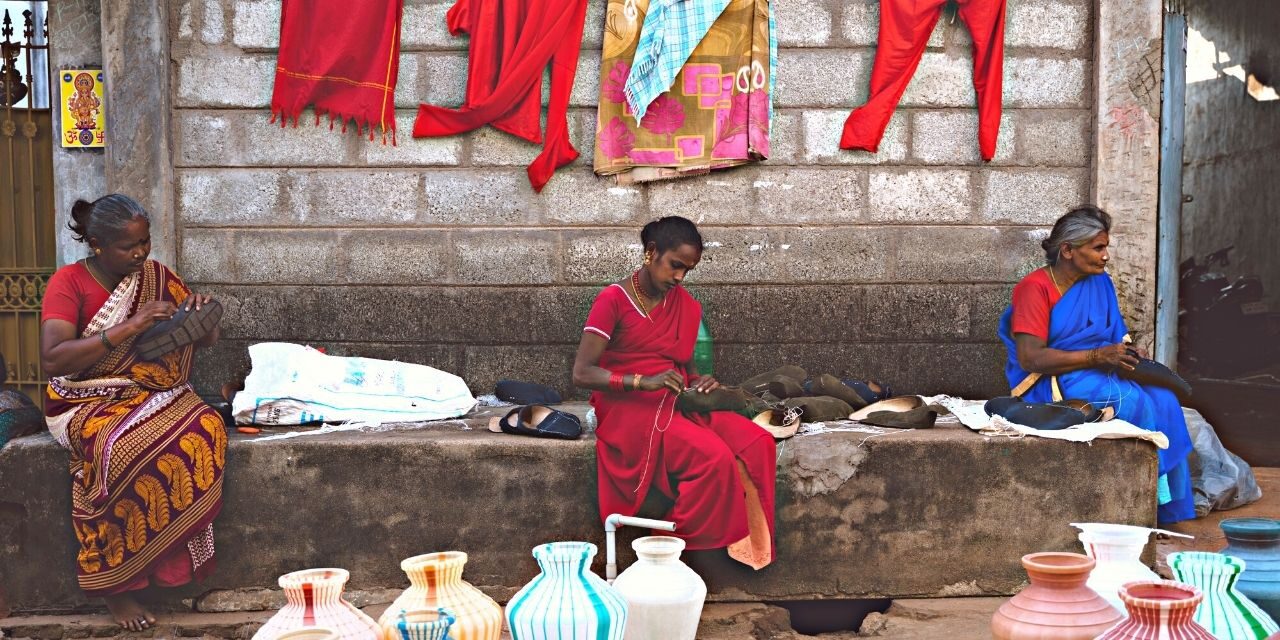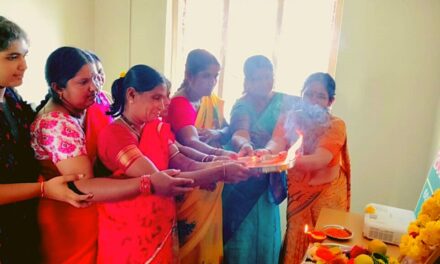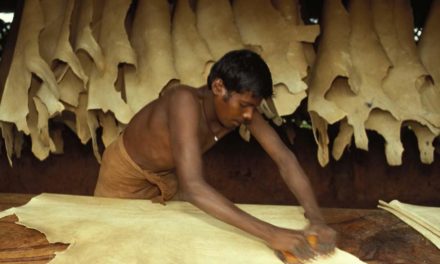Encouraging Developments in Worker Awareness As ‘Together For Decent Leather’ Project Concludes
How does state-sponsored health insurance help a shoe factory worker in Tamil Nadu’s Ambur? It could prevent the worker from falling into a debt trap while raising funds for a medical emergency. Though factories of Ambur, which is South India’s biggest leather manufacturing cluster, supply for high-end global brands, they pay their workers grossly insufficient wages, sometimes lower than the bare minimum (below Rs. 10,000 p.m).
Not many workers are aware of their claims under statutory benefits like the Employee State Insurance (ESI) that could go a long way in easing financial burdens. And that’s why it was surprising to see a group of workers from Ambur come together a few months ago to demand their rights. With the assistance of local activists and CSOs, they submitted a memorandum to the local taluk office asking ESI facilities (offices and dispensaries) to be extended to all parts of Tirupattur district and for a district-level speciality hospital to treat occupational health problems. The intervention helped and soon, the ESI department extended the facilities and sanctioned a dispensary in the area, recalls Kohila Senbagam, Project Coordinator (Leather sector).
Kohila says that the workers’ mobilization played a big role in this remarkable development. And this gathered momentum after the awareness creation done by the local Cividep team. ‘We were able to talk about ESI and other rights in detail to the workers as part of the Together for Decent Leather project, which concluded recently,’ she says.
Focussed Interventions Help
The Together for Decent Leather project, initiated in 2020, is a multi-country civil society consortium striving to improve working conditions in global leather supply chains across South Asia. The project comes to a close this year, after three years of collaborative work across partners in India, Bangladesh, Pakistan, Netherlands, Austria, and Germany.
Kohila and Cividep Program Lead Pradeepan Ravi have been at the helm of leather sector activities, since 2016. They say that more workers now know about worker rights, statutory benefits, and have developed leadership skills through Cividep’s training sessions. “Shoe factory workers protested when there was an instance of sexual harassment by a supervisor. The person was dismissed,” says Kohila.
Homeworkers (as seen in the pic above) too are now motivated to stand up for their rights. “They recently demanded that the village Gram Sabha (village council) formally recognise the local homeworkers’ collective,” says Pradeepan. Further, they collectively refused to take work from a subcontractor who was paying very low piece rates. “The project really helped workers experience the benefits of solidarity,” he says.
Leather, and leather products manufacturing is one of the biggest non-farm employers in India. The sector has 4.42 million workers, among whom 30% are women. Women in India’s manufacturing sector are employed only in a handful of industries, and in a few states. Of the roughly 1.6 million women workers in manufacturing across India, 43% work in Tamil Nadu’s factories; and leather and related products is one of the top five employing industries.
Besides, the industry supports the livelihoods of a large number of people from deprived communities including Dalits and other minorities. Those employed work out of big manufacturing and export factories, small and medium sized tanneries, and from homes where women stitch shoe uppers for subcontractors who supply to factories.
Research Shows Poor Working Conditions
Under the Decent Leather project, Cividep also conducted research on working conditions. Interviews with factory and tannery workers point to low wages, lack of permanent contracts and job security, high production targets, coercive shop floors with penalties such as frequent overtime.
“I joined the company as a helper in the upper division. I have to work all 30 days a month to earn INR 6,000 to 6,500,” says a 21-year-old female worker. As a temporary worker she is paid only for the days she works. However, the wages are not sufficient despite working without days off. “I am pregnant now and I will have to leave the job in another six months. I don’t know how we will manage the household expenses as my husband lost his job during Covid.”
This study report on working conditions, points to how old risks in the industry are getting perpetuated. Despite business recovery after the pandemic-related shocks, workers’ conditions are yet to improve. “Suppliers made use of the workers’ helplessness during the pandemic. As orders from overseas brands continued to be irregular for a long time, it became easier for factories to take in or fire workers”, says Pradeepan, co-author of the study.
Linking Ambur Workers To Global Brands
The research project allowed the team to have a broad outlook on the topic. “We could draw historical and policy links regarding value production in Indian leather supply chains. The team was excited to take on this broad mandate while doing field research and ultimately, in the final report,” says Sreyan Chatterjee, Research Consultant and co-author of the study.
Additionally, the study has explored most indicators related to labour rights risks. Although the industry caters to many international brands in Europe and elsewhere, the supply chain is obscure; most brands don’t publish information about their suppliers. Through desk research, European civil society partners in the DL consortium were able to undertake a mapping of the supply chain of the European brands sourcing from India.
Consequently, the field research in Ambur was able to focus on factories that supply these major European brands. With mandatory directives now being promoted at the EU level on sustainable corporate due diligence throughout global value chains, this report presents an opportunity for brands to reevaluate their functioning. Post-Covid, these findings can potentially set a baseline, inform, and feed into their due diligence practices.
So far, the social and human rights risks in global leather value chains have not received much attention. But through this project, the consortium has been able to bring the research findings to the attention of various multi-stakeholder institutions such as Fair Wear Foundation, Ethical Trading Initiatives, Leather Working Group, as well as some brands. The task of reaching out and initiating dialogue with brands has been challenging, and many were reluctant to accept or engage with the research findings. “And brand engagement is crucial because any civil society led action without that would not lead to changes on the shopfloor”,” says Pradeepan. However, some brands have reacted positively to discussions and agreed to reach out for future due diligence exercises. The Cividep team plans to follow up with these brands and the MSIs to improve transparency, human rights due diligence, and access to remedy. To improve civil society solidarity for workers, the team is in touch with local CSOs and has apprised them of the research findings.
Work To Continue
Through the project, Cividep has been able to reach out to more than 1000 workers (factory, homeworker and tannery) through training programs, health camps, and social security assistance. Additionally, a health and safety handbook has been designed in Tamil for leather homeworkers and tannery workers.
However, work on improving the sector’s social and environmental sustainability has just started. The leather and footwear industry is projected to expand significantly given the policy push from both the state and central governments. “Though many such encouraging outcomes have emerged, these are only initial steps. Cividep and consortium partners will continue this engagement to push brands and other stakeholders to act on the risks in the supply chain,” says Pradeepan.
Looking back at the last 3 years, Executive Director Deepika Rao reflected on why the work is of consequence , “Projects like Together for decent Leather are really important. They shine the light on the working conditions in an industry which is consumer facing, has an abysmally poor track record of employment conditions and yet receives very little attention in the media.”





